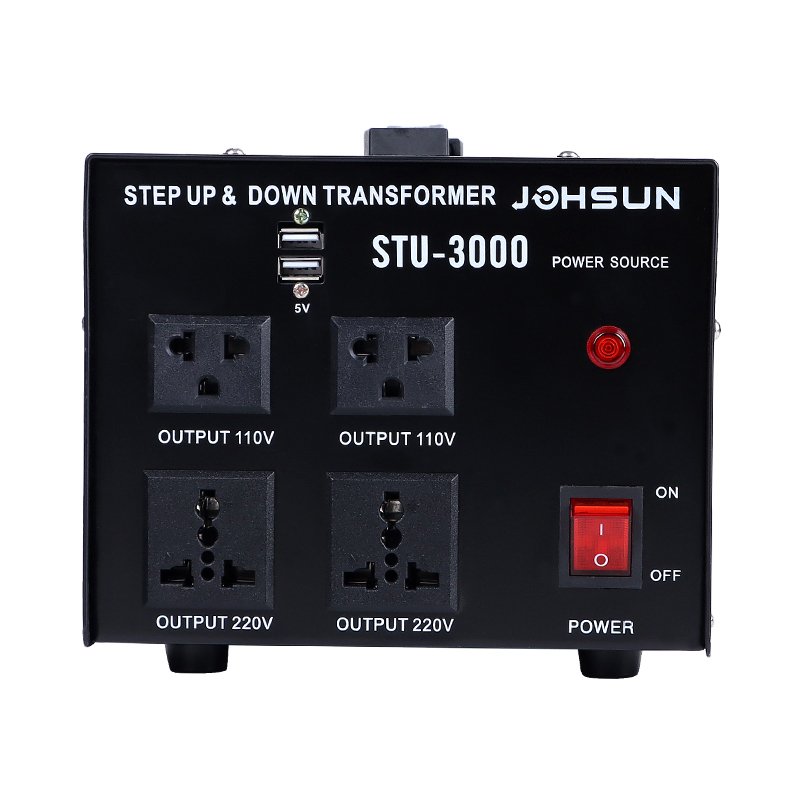Functions of voltage stabilizer
- It can stabilize the voltage of low voltage 125V-165V or high voltage 250V-270V between 200-230V, so that household appliances can work normally;
- When the input voltage is higher than 255V or lower than 160V and the output voltage is higher than 235V, it can automatically cut off the power supply;
- When the power is suddenly restored after the power is cut off, the output power supply can be delayed for 5-8 minutes to avoid damage to the appliance due to excessive voltage. When purchasing a household voltage stabilizer, you must pay attention to whether the above three basic functions are complete or not.
- The power supply voltage stabilizer can generally only stabilize the voltage within the corresponding range, and it will also fail to stabilize the voltage beyond this range.
Classification of voltage stabilizers
Manual voltage stabilizer: This type of product has the lowest price. Because of its inconvenient operation, it has basically been eliminated.
Automatic voltage stabilizer:
- Pole type automatic voltage stabilizer: High-end voltage stabilizer uses servo motor to control voltage. Its advantage is that there is no instantaneous power failure, the output voltage is stable, and the general voltage regulation accuracy is 3-5%. It is suitable for high-end and electrical appliances with high voltage requirements, such as computers and test equipment. For example, the Tinglang SVC series fully automatic high-precision voltage stabilizer and the Tinglang TSD series servo AC voltage stabilizer.
- Relay type automatic voltage stabilizer: The output voltage is adjusted by relay switching, the voltage fluctuation is large, and the accuracy is relatively low. It is used by mid-range voltage stabilizers, such as the Tinglang TM series high-power transfer automatic AC voltage stabilizer. This type of product has high stability and low price, and is suitable for equipment with low voltage accuracy requirements.
Causes of damage after using the voltage stabilizer
- No margin was left when purchasing, and the rated power of the home appliance was purchased, causing the voltage stabilizer to run at full load for a long time and cause failures; if you want to buy a voltage stabilizer for electrical appliances with a small starting current, such as refrigerators and TVs, the power of the voltage stabilizer should be 2-3 times the power of the appliance; if you want to buy a voltage stabilizer for electrical appliances with a large starting current, such as air conditioners, you can buy it at 3-5 times its power.
- Incorrect type selection, such as relay power supply voltage stabilizers, not only cannot protect appliances that require high-precision voltage (such as computers), but also have a bad effect.
- When installing, it is close to the wall or roof for convenience, resulting in poor heat dissipation. For this reason, experts recommend that when users purchase a voltage stabilizer, the rated output capacity should be more than 3 times the power of the home appliance to be protected; when installing, it must be about 20 cm away from the wall or roof to facilitate heat dissipation. The voltage stabilizer should also be maintained regularly during use.
Installation and maintenance of voltage stabilizer
- Electric work such as installation, wiring, and adjustment must be performed by electricians to avoid electric shock and damage to the voltage stabilizer during wiring and adjustment.
- The voltage stabilizer should have good ventilation and heat dissipation. Do not block or cover the heat dissipation holes with any objects to hinder the heat dissipation of the power supply, which may cause the voltage stabilizer to overheat. If the temperature rise is too high, please install a cooling device fan (generally, large voltage stabilizers have installed cooling devices).
- Regularly remove dust from the machine, keep the gear coil grinding surface and carbon brushes clean, and adjust the contact pressure between the carbon brush and the coil to make it in good contact when the carbon brush is worn after long-term work to avoid sparking.
- To ensure your own safety, the housing should be grounded.







